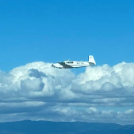Sticky Valve and intake valve cupping on IO360
-
Members Online
- MikeOH
- redrider54
- compjtc
- TCC
- Tyler G
- EricJ
- 00-Negative
- DXB
- Paul Thomas
- Scottknoll
- cliffy
- 201Mooniac
- kortopates
- daytonabch04
- rbmaze
- bluehighwayflyer
- ta2too
- Utah20Gflyer
- hazek
- bixmooney
- Robm
- redbaron1982
- 201er
- eman1200
- Jim F
- alextstone
- 1980Mooney
- Hank
- NickG
- Ragsf15e
- AspiringOwner
- exM20K
- takair
- 47U
- Glen S.
- Sabremech


Recommended Posts
Join the conversation
You can post now and register later. If you have an account, sign in now to post with your account.